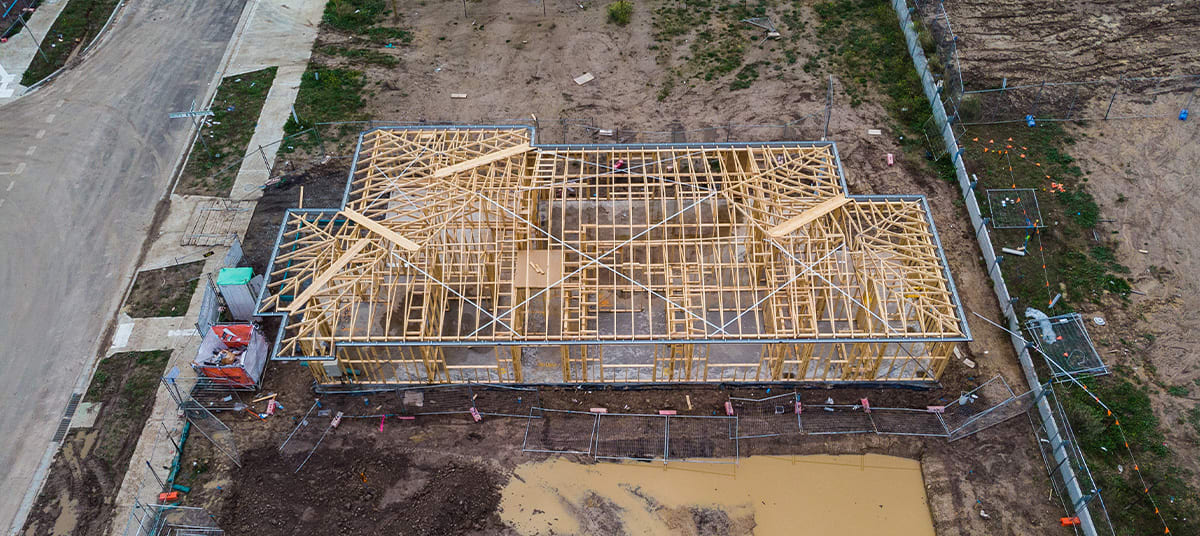
The Victorian government has said reforms could slash approval times to 10 days for stand-alone homes.
The Allan Labor government has promised to deliver the “biggest overhaul of Victoria’s planning laws in decades” with a new bill aimed at cutting red tape and speeding up house building.
On Tuesday (28 October), Minister for Planning Sonya Kilkenny introduced the Planning Amendment (Better Decisions Made Faster) Bill 2025 into the Victorian Parliament – updating the Planning and Environment Act 1987.
The bill creates three separate pathways for planning approvals depending on the type of home being built, with faster timelines for simpler projects.
The update will cut planning time frames, the Victorian government said, with stand-alone homes and duplexes set to take 10 days, town houses and low-rise developments to take 30 days, and larger apartment buildings to take 60 days to approve.
Currently, a planning permit takes an average of 140 days to get approved, and this can grow to more than 300 days if there is an objection, the Allan government said.
Under the existing act, most projects go through the same process, meaning a single home can be assessed the same way as a multistorey apartment block.
The bill will establish “common sense appeal rights”, meaning approvals for homes, duplexes, town houses, and low-rise apartments will require no notice and have no third-party appeals.
For planning processes around higher-density apartments, only those who are directly impacted will get notice and be able to appeal.
Current Victorian laws permit anyone to object to a planning permit, even if they do not live near the proposed development.
The bill is also aimed at making it easier for councils and the government to update local planning rules or planning scheme amendments.
Simple updates like fixing a zoning boundary or adjusting a local policy will be easier, the government said.
More complex proposals – like rezoning land for a completely different use – will go through a more detailed process.
The state government claimed the changes would contribute more than $900 million of economic value each year and help speed up home construction.
Commenting on the bill, Premier Jacinta Allan said: “Victoria’s planning laws were written decades ago – now we’re bringing them into the 21st century.
“We want a planning system that makes better, faster decisions because we want more homes for young people.
“Victoria leads the nation when it comes to building and approving homes – but we know the system needs to move faster. That’s exactly what this bill will do.”
Minister for Planning Kilkenny added: “We’re fixing a planning system that’s been slowing things down – this new bill is creating clearer rules, faster decisions, and fewer delays for people trying to build a home.”
Housing industry praises reforms
Industry bodies have reacted positively to the changes.
Housing Industry Association (HIA) executive director Keith Ryan said: “The three main elements of this bill, as announced today, are all important reforms and should especially help HIA members build more homes.
“While planning reform will take time to result in more homes being built, the announcements today by the Victorian government give the home building industry more confidence that the planning system will evolve to work with, and not against, the home building industry and, importantly, the many Victorians who want one of the 800,000 homes built.”
Last month, the HIA urged the government to reduce regulatory burdens after claiming red tape is “overwhelming business and slowing the delivery of homes”.
The Property Council of Australia has also welcomed the bill.
“The headline changes announced today all have the potential to increase certainty for industry and deliver more homes, workplaces and communities more easily,” it said.
“Ultimately, like any major reform, its success will lie in implementation. We recognise that planning legislation is complex and the bill will contain a wide range of changes that may need refinement along the way.”
[Related: Red tape overhaul needed for housing: HIA]

